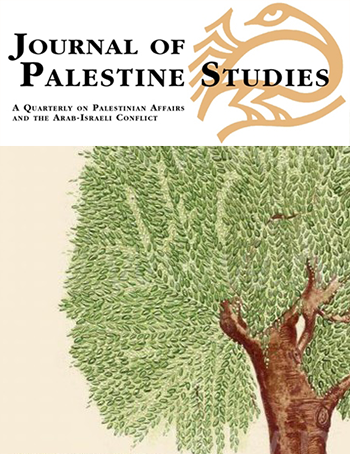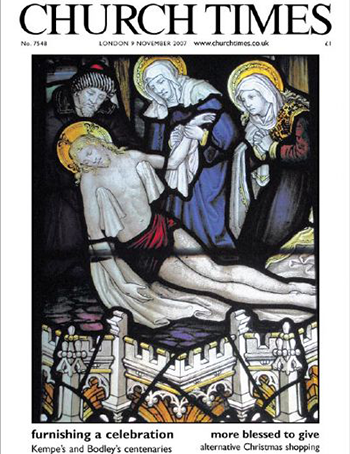
JOURNAL OF PALESTINE STUDIES
Old History
Gerald Butt is well-known as having been a BBC correspondent in Beirut and Jerusalem throughout much of the 1980's. He provided firm journalistic coverage of the turbulent early years of the Palestinian uprising. In Life at the Crossroads, he has stepped away from the violent complexities of recent history to write a book that illuminates the historical and archaeological interest of Gaza , providing a valuable context to current events. "Gaza," he writes, "to the outsider who is familiar only with its association with violence, might appear to be an unpromising subject for a biography and an unlikely place to claim the significance of having been a crossroads of the Middle East " (p.6). Butt does manage to make this "unpromising subject" very interesting indeed. His use of the word "biography" to describe his effort is telling. The reader does feel as informed of the life, external influences, subjectivities, and the character of Gaza as one would feel after reading a personal biography. This creates a familiarity seldom achieved in histories, but sometimes found in good travel books.
The objective realities of the modern Gaza Strip are introduced in the first chapter. A reader unfamiliar with the area will find everything in a nutshell here, reported accurately and with a refreshing lack of polemic. Thereafter, Life at the Crossroads follows the time-honored format of starting at the beginning and moving chronologically to the present. The author deftly avoids the danger of digressing into the histories of more glamorous neighbors: Cairo, Jerusalem, Baghdad, and Damascus . Butt's readable style makes battles, rulers, kingdoms, and empires come to life. Describing the Pharaonic reconquest of Gaza, "traveling at about fifteen miles a day Tuthmosis and his troops would have reached Gaza , the first major settlement on the road, ten days later.... Archaeologists believe that Gaza had defensive mud-brick fortifications at this time. A sentry posted on the walls could have spied a formidable army approaching, the dust from thousands if hooves signaling its approach" (p. 20-21). The salient factor of Gaza 's history has been its position. Strategically built on a hill, the first settlement to be encountered by traders and armies crossing the Sinai from the Nile Valley, Gaza was the gateway and potential staging area from which to press on to a fertile coastal plain, Lebanon and Syria. For the inhabitants of the Nile Valley , Gaza has been an important first line of defense and offense. Concomitanly, it has played the same role for westward looking empires from the Assyrians to the Israelis. "Gaza, with its unique position on the major international trade routes, its flourishing port and its proximity to the bigger prize of Egypt, was once again a natural target for conquest" (p.41). For most of its history, Gaza has been prosperous, worth occupying for tribute.
The text is enlivened by anecdote and myth. Butt also makes good use of biblical quotations. His recounting of the tale of Samson, whose best-known life events took place in Gaza , is engrossing. Alexander's massacre in the city makes grisly reading. The daunting task of addressing the Roman empire in Palestine is neatly managed. Again, details bring it to life: "The Roman empire was now, however, totally benign. Its prosperity was based partly on brutality - not least on the purchase and sale of slaves, a thriving traffic at the heart of the Roman society. Gaza traded in slaves as much as it did in commodities" (p. 63). During the subsequent Byzantine era, that trade evolved to the export of wine.
No need to belabor the list of empires risen and fallen on Gaza soil within this review. Suffice it to say this book addresses each: how they arrived, and why they left. If this reviewer had any complaint, it was the lack of timeline appendix. Since the writer does not burden the text with dates, and since the sheer time span (5,000 years) and number of actors are awesome, such device would have been a useful reference.
Life at the Crossroads does not convey the sense of a cursory look at all history before the 1948 Arab-Israeli war as an excuse to talk about exile, occupation, and resistance. Those topics are fully addressed in the even-handed manner that characterizes the whole book. In fact, nearly a third of the text is devoted to twentieth-century history. Modern Palestinian history and the current situation of the Gaza Strip are well chronicled. The greatest value of Life at the Crossroads is that it gathers into one enjoyable book a history with Gaza as the star.
Reviewed by Martha Myers Eleiwa
Martha Myers Eleiwa has lived and worked in the West Bank and Gaza Strip for over ten years.
Journal of Palestine Studies
Issue: Vol. XXVI No. 1 - Autumn 1996
Section: Recent Books - Page 99


